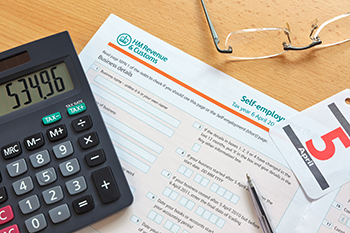 As I write, my garden is in full bloom and the U.K. Parliament is preparing for its summer recess. The Chartered Institute of Payroll Professionals (CIPP) policy team, however, is well and truly into planning for the spring of 2020 and the start of the 2020 tax year, which will begin on 6 April 2020.
As I write, my garden is in full bloom and the U.K. Parliament is preparing for its summer recess. The Chartered Institute of Payroll Professionals (CIPP) policy team, however, is well and truly into planning for the spring of 2020 and the start of the 2020 tax year, which will begin on 6 April 2020.
There are a number of policy changes due to come into fruition from April 2020. Today, however, I aim to focus on off-payroll working reforms in the private sector and the restriction of eligibility for the Employment Allowance.
Employment Allowance
When the Employment Allowance was first introduced in April 2014, at the rate of £2,000, the U.K. government aspired to stimulate growth in employment. This allowance is available to all employers in business and in the voluntary sector. The rate of Employment Allowance that can now be claimed is £3,000 per tax year, and the employer claims it by way of a deduction to its secondary National Insurance Contributions (NICs).
Budget 2018 included the announcement that, as from April 2020, the Employment Allowance was to be restricted to employers that have, in the preceding tax year, a secondary NIC liability of less than £100,000.
As a result of this restriction to smaller employers, the Employment Allowance is to be reclassified as de minimis state aid.
State Aid
State aid can be provided by a public body in many forms, which can include services as well as cash funding. It will fall into one of three categories:
- De minimis
- Block grant
- Aid requiring prior notification and approval
De minimis aid can be given to an entity for many different purposes. The amounts are generally small and are subject to an overall ceiling of €200,000 over a three-year financial period. The sterling equivalent amount is calculated by reference to the rate applicable on the written date of offer, which for the Employment Allowance will be 1 April.
If you are wondering how the U.K.’s impending exit from the European Union (EU) could possibly impact this, particularly as it relates to the need to account for in Euros, the U.K. State Aid Regulations will ensure a continuation of this requirement.
The Employment Allowance (Excluded Persons) Regulations 2019
Draft regulations have been laid by HM Treasury that aim to make clear that a “person,” which could be a company/charity or group of connected companies/charities, will now become excluded from being able to claim for two reasons:
- Excluded Person—Exceeding £100,000 secondary Class 1 liability
The regulations make clear that where a “person” has a secondary Class 1 liability of £100,000 or more in the previous tax year, they do not qualify for employment allowance.
From April 2020, the employer will need to ensure that any carried-forward element within its payroll software, which indicates that it is claiming the employment allowance, is deselected. If using an external payroll service, the employer will also need to ensure to communicate this change.
In addition, the employer will become excluded if during the tax year it becomes connected with a company or group of companies that have previously been excluded because their secondary Class 1 liability exceeded £100,000.
- Excluded Person—De minimis ceiling could be breached
An employer will also become ineligible where it is, or has been, in receipt of de minimis state aid and by claiming the £3,000 it will breach its ceiling of €200,000.
This is an all or nothing situation. If an employer will breach the ceiling by claiming the full £3,000 then it cannot claim–even if in reality it wouldn’t claim the entire amount.
Recordkeeping will be key to the success of this policy–the employer must be able to keep an accurate record of de minimis funding received for three years.
Employer Declaration to HMRC
HMRC provides state aid by way of the Employment Allowance. HMRC will need to be able to demonstrate that it has taken measures to check that the employer has not breached its €200,000 ceiling. HMRC will need to keep records for 10 years.
The method that HM Treasury and HMRC have chosen for claiming the Employment Allowance is through the RTI system and specifically the Employer Payment Summary (EPS).
In addition to declaring that employers have checked their secondary Class 1 liability for the previous tax year, the following information and declaration must be provided where the employer is, or has been in the previous two years, allocated de minimis state aid:
- The amount of de minimis aid from the previous two years as well as any allocation or receipts for the current year. The value is to be expressed in Euros, using an exchange rate published by HMRC on 1 April.
- The trade sector that the employer operates in:
- Agriculture
- Aquaculture and fisheries
- Road transport
- Industry or transport
Where employers are part of a group, they must provide details of the total amount received collectively across all connected companies for the same period and declare that “to the best of their knowledge” they:
- Will not exceed the relevant de minimis ceiling for state aid for the sector(s) in which they operate by claiming the full annual amount of an Employment Allowance
- Are the only connected company making one claim for an Employment Allowance across the whole connected group, as per the requirements at Section 3 and Schedule 1 of NICA 2014
- Are not aware of any other reason why they would be excluded from claiming an Employment Allowance for any other (eligibility) reason
This proposal presents a significant challenge to the employer to ensure that its payroll processes can be adapted to communicate this important but non-pay related data. Alternative methods could have been chosen by the government to gather this data, but unhappily, payroll offers the most cost-effective route.
Off-Payroll Working Rules From April 2020
Intermediaries legislation was introduced in 2000 (IR35) in an attempt to address “disguised employment” situations.
Following claims of widespread noncompliance from HMRC, in April 2017 it became the subject of reform within the public sector. From April 2020, all sectors that are not already captured by the public sector reform will become responsible for making the determination to establish whether the contract between the client and the worker would be one of employment if the worker wasn’t providing their services through a Personal Service Company (PSC) (or some other third-party intermediary).
Under the off-payroll reforms and where the contract is deemed to be captured by the rules, then the fee payer (which may be one and the same as the client or engager) becomes responsible for processing the fee payment through the payroll and subjecting it to PAYE Income Tax and Class 1 NICs.
Intermediaries legislation, which will still exist in the private sector for small clients, will continue to require the PSC to determine the status of the contract and process PAYE and Class 1 NICs if applicable.
The client, also referred to as the engager, may, in addition, be the fee payer; however if the client uses an agency or other third party, it would then be the fee payer.
Corporate Engagers
Incorporated clients will use the definition that is currently applied within the Companies Act 2006, which means that they meet two of the three qualifying conditions:
- Annual turnover not more than £10.2 million
- Balance sheet total not more than £5.1 million
- Number of employees not more than 50
Small companies will become medium or large if they exceed the test for two consecutive years, and equally that same measure is used if they shrink in size.
Non-Corporate Engagers
Unincorporated clients will not benefit from the two-year rule and will only have one test to meet–which is that their turnover exceeds £10.2 million.
The rules will begin to apply in the tax year following the calendar year in which the threshold is exceeded. Many small organisations that are approaching or predicting that their turnover will exceed £10.2 million will need to be prepared to adapt new processes to take on this additional obligation.
Check Employment Status for Tax (CEST)
To support the off-payroll working reforms to the public sector, HMRC built an online service that would provide, in 85% of cases, a determination. It also provides a print-out of the outcome and “HMRC will stand by the result given unless a compliance check finds the information provided isn’t accurate.”
In advance of the further reforms in April 2020, HMRC will publish an updated CEST that seeks to address some of the criticism it has received.
Flow of Information
The client is responsible for passing the determination, together with the reasons for making that determination, to the fee payer (where they are not one and the same) and also directly to the worker—the aim being to improve transparency for the worker.
Addressing Noncompliance in Supply Chains
The engager and the fee payer may be the same; however, where a supply chain exists, there is an increased risk that the failure to comply will occur either because one party in the chain fails to pass on the status determination or fails to act on it resulting in an unpaid tax liability.
Where failure to comply occurs by the fee payer in a supply chain, HMRC will take steps to collect the unpaid liability from the noncompliant entity. When that is not possible, liability will transfer to the first agency in the supply chain or, if that is not possible, then to the engaging client.
Client-Led Status Disagreement Process
Legislation will set out minimum requirements of a statutory disagreement process to ensure the same process will be followed by all clients. HMRC aims to set out in guidance how a client can fulfil its obligations to take reasonable care and how best to implement the status disagreement process where the fee payer and/or the worker disagree with the determination given by the client.
Early guidance by HMRC prompts engagers to “prepare now,” and it has further committed to publish updated guidance “by the end of the summer.”
It seems that the CIPP Policy Team is not the only ones facing a busy summer.
Do you like our content? Join the GPMI community to get free education and articles straight to your inbox!

Samantha Mann, MAAT, MCIPPDip, is CIPP’s Senior Policy and Research Officer.